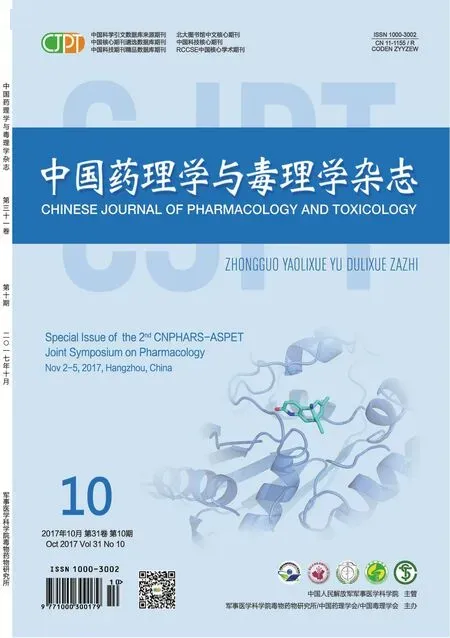Glucuronidation is the dominating in-vivo metabolism pathway of herbacetin:elucidation of herbacetin pharmacokinetics after intravenous and oral administration in rats
Bei-kang GE,Liang ZHAO,Te QI,Ping-xiang XU,Ming XUE
(Department of Pharmacology,School of Basic Medical Sciences,Capital Medical University,Beijing 100069,China)
T3-8
Glucuronidation is the dominating in-vivo metabolism pathway of herbacetin:elucidation of herbacetin pharmacokinetics after intravenous and oral administration in rats
Bei-kang GE,Liang ZHAO,Te QI,Ping-xiang XU,Ming XUE
(Department of Pharmacology,School of Basic Medical Sciences,Capital Medical University,Beijing 100069,China)
OBJECTIVETo map a comprehensive metabolic pathway of herbacetin in rats,specifically,to elucidate the biotransformation of herbacetin in vivo and to simultaneously monitor the pharmacokinetic process of both parent drug and its major metabolites.METHODSliquid chromatography/ion trap mass spectrometry(LC/MSn)and ultra-liquid chromatography coupled with mass spectrometry(UPLC/MS)were combined in the current study for qualitative and quantitative determinations of herbacetin and its metabolites in bile,urine and feces after both oral and intravenous administration of herbacetin to rats.Enzyme kinetic studies on the intestinal and hepatic metabolism of herbacetin were further conducted to elucidate metabolic profiles of herbacetin in rat tissues and organs.Additionally,plasma concentration profiles of herbacetin and its metabolites in rats were obtained to characterize the overall pharmacokinetic behavior of herbacetin.RESULTSIt was found that herbacetin was excreted primarily from rat urine in the form of glucuronide-conjugations.Subsequent in vitro enzyme kinetic studies and in vivo pharmacokinetic investigations suggested an extensive hepatic metabolism of herbacetin and the high exposure of herbacetin-glucuronides in systemic circulation.The clearance,half-life and bioavailability of herbacetin in rats were determined as(16.4±1.92)mL·kg-1·min-1,(11.9±2.7)min,and 1.32%,respectively.On basis of these findings,a comprehensive metabolic pathway of herbacetin in rats was composed.In addition,a physiology based pharmacokinetic(PBPK)model was successfully developed with the aid of the GastroPlus to simulate the pharmacokinetic process of herbacetin in rats.Application of the PBPK modeling can provide a useful starting point to understand and extrapolate pharmacokinetic parameters among different species,populations,and disease states.CONCLUSIONAfter oral administration,herbacetin was subjected to colonic degradation and extensive first pass metabolism,with glucuronidation as its dominating in vivo metabolic pathway.
herbacetin;pharmacokinetics;biotransformation;glucuronidation;hepatic metabolism;colonic degradation
The project supported by National Foundation of Natural Sciences of China(81573683 and 81173121)
Ming XUE,Tel:(010)83951520,E-mail:xuem@ccmu.edu.com
 中國(guó)藥理學(xué)與毒理學(xué)雜志2017年10期
中國(guó)藥理學(xué)與毒理學(xué)雜志2017年10期
- 中國(guó)藥理學(xué)與毒理學(xué)雜志的其它文章
- Pharmacological study on traditional Chinese medicine and natural product in China
- GPCRomics:tissue and cellular GPCR expression identifies new therapeutic targets
- Direction of new drug research:soft regulation of inflammatory immune responses
- Targeting Gprotein-coupled receptors for the treatment of autoimmune diseases
- Arrestin mediated GPCR biased signaling and its application in new drug discovery
- Identification of a novel target for cancer and anti-fibrotic therapy
